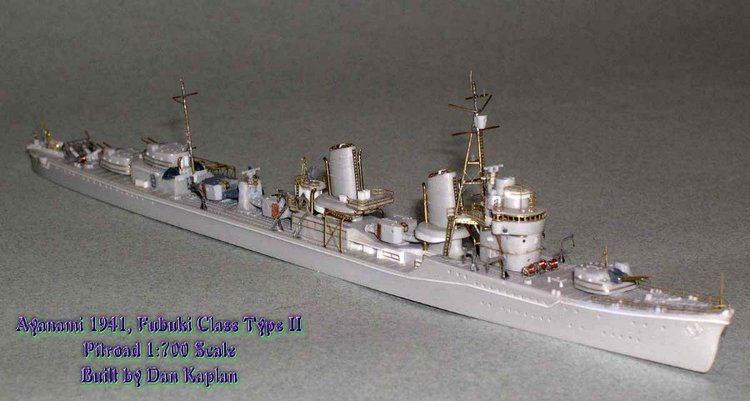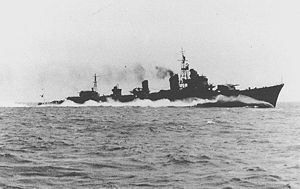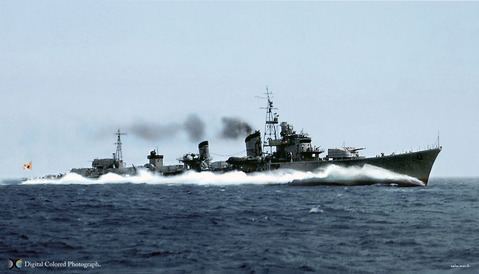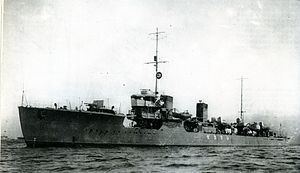Laid down 8 August 1941 Struck 10 January 1945 Length 126 m Launched 18 July 1942 | Commissioned 10 May 1943 Class and type none Construction started 8 August 1941 | |
Name Shimakaze (島風) (Island Wind) | ||
Shimakaze (島風) (Island Wind) was a one-off super-destroyer built for the Imperial Japanese Navy during World War II. She was armed with six 127 mm (5.0 in) dual-purpose guns and conventional anti-aircraft and anti-submarine weaponry. More importantly, she was the only Japanese destroyer to be armed with 15 torpedo tubes, each capable of firing the deadly 610 mm (24 in) Type 93 "Long Lance" torpedo. The ship was a testbed for an enormously powerful, high-temperature, high-pressure steam engine that was able to develop 79,240 shp (59,090 kW). This made her one of the fastest destroyers in the world: her designed speed was 39 kn (72 km/h; 45 mph), but on trials she made 40.9 kn (75.7 km/h; 47.1 mph).
Contents

Building

Ordered in 1939 under the 4th Naval Armaments Supplement Programme, Shimakaze was laid down in Maizuru Naval Arsenal in August 1941 and completed on 10 May 1943.

Japan had intended to lay down 16 similar destroyers, with long-term plans—the 5th Naval Armaments Supplement Programme—for a total of 32 to equip four destroyer squadrons, but a lack of industrial capacity prevented them from being realized.
Service history

In June 1943, Shimakaze participated in the evacuation of Japanese troops from Kiska Island towards the end of the Aleutian Islands campaign. She was present in June 1944 at the Battle of the Philippine Sea. In October 1944, the destroyer was present at the Battle of Leyte Gulf, although she played no role in the battle except for picking up survivors from the sunken battleship Musashi. While serving as the flagship of Destroyer Squadron 2 under the command of Rear Admiral Mikio Hayakawa, she was attacked and sunk by American aircraft from Task Force 38 on 11 November 1944 during the Battle of Ormoc Bay.
Speed test

Shimakaze was powered with an experimental steam turbine — which made construction of sister ships virtually impossible – during a speed test on 7 April 1943, she was clocked at 40.90 kn (75.75 km/h; 47.07 mph) with an engine output of 79,240 shp (59,090 kW).
